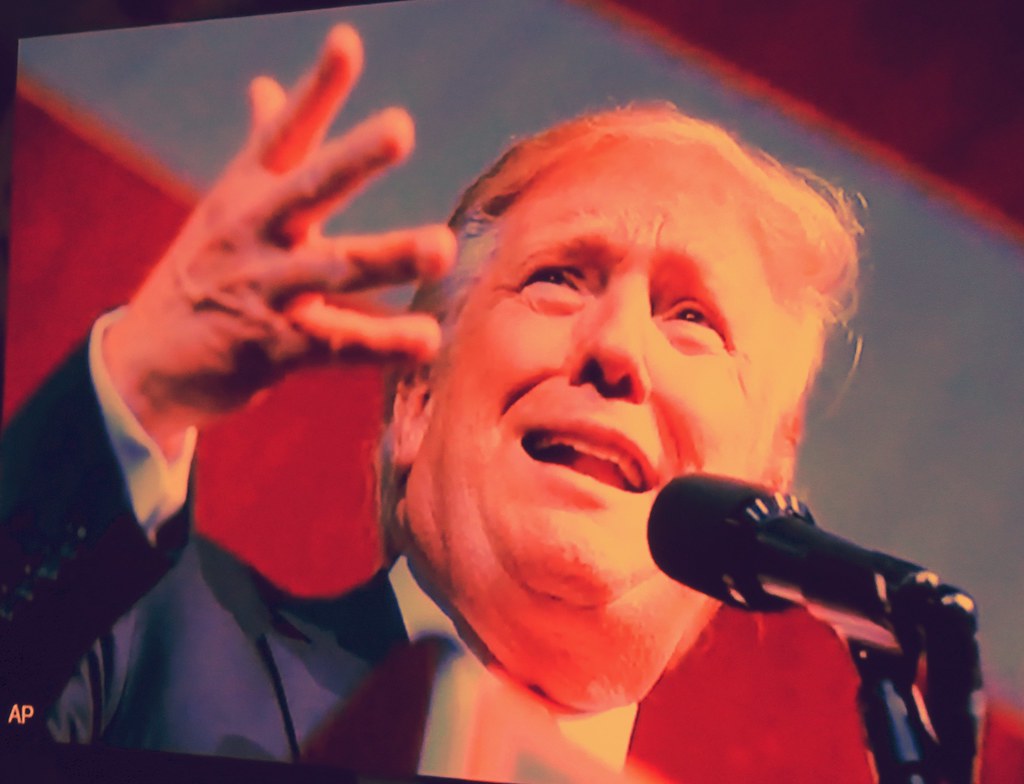Key Takeaways
• Trump AI video shows “King Trump” dumping brown liquid on protesters from a fighter jet
• The New York Times described it as a brown liquid without naming it as feces
• Critics, including a congressman and journalists, accused the Times of softening the story
• The White House claimed the brown liquid symbolized Trump’s mother
• The episode highlights growing tensions over how media covers extreme content
Trump AI video fuels new media debate
The latest Trump AI video shocked many over the weekend. In it, “King Trump” wears a crown and flies a jet. He then dumps brown liquid on protesters holding “No Kings” signs. Some viewers called it literal feces. Others saw it as a disturbing political message. As a result, experts and fans have clashed over the video’s meaning and tone.
The shocking AI video
First, Donald Trump posted a new AI video late Saturday. In it, he becomes “King Trump.” He wears a gold crown and sunglasses. Then he pilots a military jet over a cheering crowd. Suddenly, a stream of brown liquid falls onto protesters. The demonstrators run and wave their arms. The video ends with a loud roar and a dramatic music score.
Many were stunned by its crude imagery. Some experts said it showed a man unafraid to shock. Others worried it crossed the line of decency. Political analysts said the crude act could be a sign of growing aggression in election rhetoric. Moreover, they warned that AI tools make such shocking scenes easier to create and spread.
Times coverage under fire
Soon after the Trump AI video appeared, the New York Times wrote about it. The newspaper ran a story titled “Trump Posts Fake Video of Himself Flying a ‘King Trump’ Jet Over Protesters.” The Times described the scene but avoided calling the brown liquid feces. Instead, it said Trump “shared what appeared to be an AI-generated video” showing him dumping a brown liquid on demonstrators.
That choice of words did not sit well with many readers. They felt the description downplayed the video’s crude content. In turn, critics argued the Times was trying to be polite or avoid offending readers. Meanwhile, social media buzzed with calls for more blunt reporting.
Critics slam Times’ language
Democratic Representative Sean Casten of Illinois was among the first to mock the newspaper. He tweeted that readers were left guessing “what that brown liquid might have been.” He joked it could be “mole sauce” or “something even more presidential.” His tone showed frustration mixed with humor.
Next, national security journalist Marcy “emptywheel” Wheeler weighed in. She accused the Times of “sanewashing” by not naming the liquid as feces. She argued that sparing readers the crude detail made the paper seem out of touch. Her comment fired up both liberals and conservatives online.
Then, conservative attorney George Conway added more fuel to the fire. He wrote that the Times did not even confirm what the brown liquid was. He mocked the idea that a reporter had called the White House only to get a strange answer. In his words, the Times was “unable to verify” the claim that the liquid symbolized Trump’s mother.
White House response
Amid the uproar, a Times reporter contacted the White House for comment. According to George Conway, the White House said the brown liquid represented Trump’s mother. They gave no further explanation. The Times noted it could not confirm this odd claim at press time.
This response confused many people. Some saw it as a weird joke. Others thought it might be a deflection. Either way, the explanation did little to calm critics. Instead, it turned the story into a comedy of errors, with a bizarre symbolism thrown in.
What this means for the future
Looking ahead, this clash over the Trump AI video shows a few trends. First, AI tools are now powerful enough to create vivid political messages. As a result, fact-checkers and journalists face fresh challenges. They must explain AI videos clearly without feeding misinformation.
Second, the debate highlights media responsibility. When a major outlet downplays shocking content, readers may lose trust. Therefore, clear and honest descriptions are vital. They help the public understand the real stakes and dangers of extreme imagery.
Finally, political discourse is growing more extreme. If a former president can dump virtual feces on protesters, what comes next? Experts worry that future AI videos could become even more violent or graphic. They call for clear rules on how to flag or label such content online.
Conclusion
The Trump AI video may be fake, but its impact is real. It forced a national debate on media language, AI ethics, and political extremes. While the Times chose a cautious tone, critics said it watered down the controversy. As AI becomes more common, similar clashes will likely happen again. For now, the question stands: how should news outlets report on shocking AI content? And how will the public respond next time?
Frequently Asked Questions
Why did Trump post the AI video?
He aimed to shock and energize supporters by mocking protesters. The video pushes his image as a bold leader unafraid to use extreme tactics.
Is the video real or AI-generated?
It’s entirely created with AI. No real footage of Trump flying a jet or dumping liquid on people exists.
Why did the New York Times avoid calling it feces?
The paper likely wanted to maintain a neutral tone and avoid crude language. Critics say this choice softened the story too much.
What does this mean for media reporting?
News outlets must balance clear descriptions with sensitivity. As AI videos become common, accurate language is key to keeping public trust.

